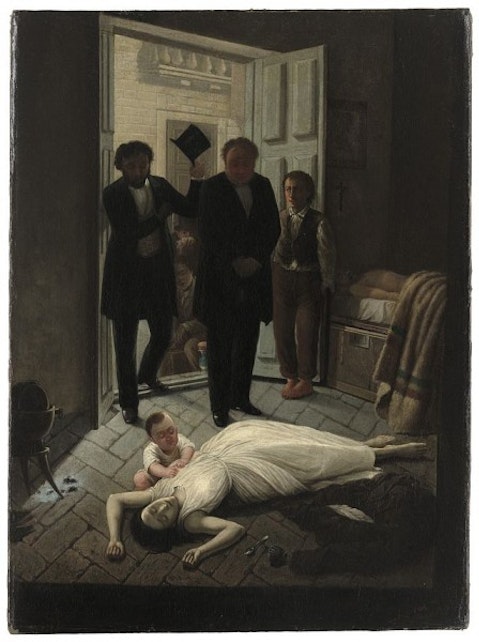We go through the death toll like no other with the 11 biggest epidemics in history. Disease, viruses, sicknesses and all those especially unknown and untreatable to us pose a threat to a majority of the world’s population. It is good to know that many are in the effort of combating and curing what was once incurable. There was a time though that some of the easily cured diseases and viruses today weren’t as easy to fight off with modern medicine. Some time ago plagues were common; diseases could wipe out large portions of the population and can even affect people on a global scale. If recent years have been any indication, is that we don’t have the cure for everything yet. Also, there are just some things out there that will catch us unprepared if we are not ready for it.
A breakout of plague or disease cannot be called an epidemic immediately, one of the factors of epidemics are the number of people affected and the death toll. These two factors will be the ones we will be looking at in making this list. If you’re looking for more health awareness, we also have a list on Country-by-Country Life Expectancy: The World’s 15 Healthiest Countries.
You might be surprised by what kinds of diseases are in this list, others you may be aware or have seen it first-hand. Let’s not tarry and head to the first of this list.
11. Sixth Cholera Pandemic
Cholera is a serious intestinal infection caused by a virus. It can cause an immense amount of diarrhoea and can leave victims dehydrated if not treated immediately. The sixth cholera pandemic started 1899 and ended 1923. It started from India and worked its way to neighbouring countries.

10. Southern New England Epidemic
Happening from 1616 and spanning about three years, the Southern New England Epidemic claimed the lives of around 30-90% of the population and almost wiped out the Wampanoag people. The disease itself is still relatively unknown and had characteristics that were a combination of other different diseases like leptospirosis and yellow fever.

9. Third Cholera Pandemic
Considered to have the highest death toll among the 19th century epidemics, the Third Cholera Pandemic once again originated from India, killing about a million people once it spread to Russia and claimed tens of thousands in Great Britain.

8. 1889-1890 Flu Pandemic
The 1890 flu also known as the “Asiatic Flu” spread and killed 1 million people worldwide in the span of these two years. The virus subtype is known to be H3N8.

7. Hong Kong Flu
From the H3N2 strain of the influenza virus, the Hong Kong Flu started to spread around the years 1968 to 1969 and claimed around 1 million lives worldwide.

6. Asian Flu
The Asian flu is one of the more resilient strains of the influenza virus, originating in the 1950s possibly by an animal strain like the duck strain influenza combining with the human strain influenza, by the time it had finished the death toll was around 2 million.

Let’s delve into the deadlier epidemics in the second half of this list of the 11 biggest epidemics in history.
5. Antonine Plague
The Roman campaigns to the near east had them acquire what was known as the Antonine Plague. Many suspect it was smallpox or measles but not a hundred percent sure especially since it happened around 165-180 AD. The epidemic cost the lives of 5 million people including the emperor at the time along with his co-regent Antonine, which the plague name was derived from.

4. HIV/AIDS Pandemic
The global pandemic that is HIV/AIDS is currently affecting 30 million people around the world, not including the deaths. The most people that are living with AIDS currently reside in the South African region, having more people infected compared to the rest of the world. There is no known full cure for HIV/AIDS.

3. Plague of Justinian
Affecting the Byzantine Empire and Europe for around two centuries, the plague got its name after the Byzantine emperor at that time, Justinian, who contracted the plague, yet survived. It was later discovered that the plague was actually caused by the same virus which was responsible for the bubonic plague. The epidemic killed around 50 million people.

2. 1918 Flu
The strongest of all the flu epidemics, the first strain of the flu H1N1 had killed over 75 million people worldwide. Unlike the other influenza type viruses, the 1918 Flu had a habit of killing younger and healthier people due to the virus stirring an overextension of the immune system, bombarding the body with too many reactions for it to cope with both the virus and the immune system.

1. Black Death
The only plague to have significantly reduced the world population numbers, the Black Death was a plague that originated in Central Asia and found its spread mostly through black rats being carriers. The estimated death toll is 200 million and the plague itself came from a strain of virus that was responsible for most of human history’s plagues.

That is our list of the 11 biggest epidemics in history, always take care and be aware of the signs that there might be something going around you. Of course, remember to always stay healthy to avoid any other disease.





